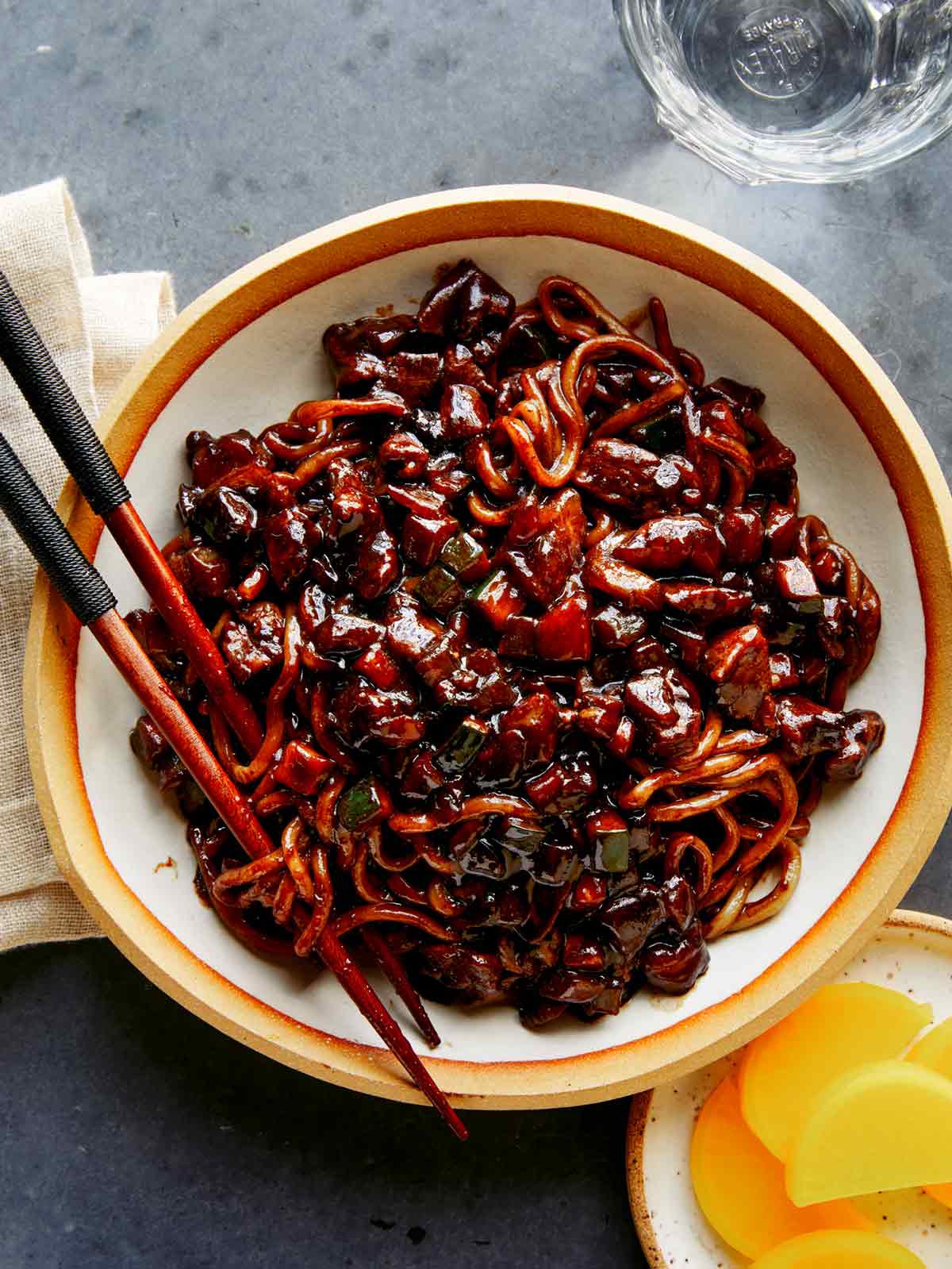pork marinade
-
Combine pork shoulder, mirin, ginger, salt, and pepper and stir together. Set aside.
toasted jajang
-
Place a large skillet over low heat and add oil. Once oil is hot, add black bean paste and sugar and stir together. Continuously stir for 3 to 4 minutes to toast.
-
Pour mixture into a small bowl and set aside.
assembly
-
Place skillet back over medium heat. Add 1 tablespoon oil and sauté marinated pork for 3 to 4 minutes.
-
Add shrimp and continue to sauté for 2 minutes.
-
Transfer pork and shrimp mixture to a plate and set aside.
-
Place skillet back over medium-high heat. Add remaining oil and sauté onion, 3 to 4minutes.
-
Add zucchini and continue to sauté for an additional 2 to 3 minutes.
-
Pour pork and shrimp mixture back into the skillet and continue to sauté for 2 to 3 minutes.
-
Stir toasted black bean paste into meat and vegetable mixture until evenly coated.
-
Stir water into skillet mixture until sauce is smooth and simmering.
-
Add cornstarch slurry and stir together until sauce thickens. Remove from heat and keep warm.
-
Fill a large pot with water and place over high heat. When water begins to boil, add noodles and cook through, stirring occasionally, until noodles are cooked through, but still a little chewy, about 5 to 6 minutes. Drain noodles into a colander and give them a gentle and quick rinse.
-
Divide noodles into bowls and top each with ladles of sauce. Mix together.
Tips and Tricks for Jajangmyeon Success
- Toast the chunjang over low to medium-low heat to prevent it from burning. Some dried bits may stick to the bottom of the pan, which is okay as you’ll be able to scrape it up as you make the rest of the sauce.
Sauce Variations
Jajangmyeon sauce is made a number of ways depending on preference. Some of the most common and popular variations include:
- Garnishing with julienne cucumber is one of the most popular ways to serve jajangmyeon. The cool, mild flavor and crisp texture pair well with the savory, salty dish.
- Gochugaru (Korean chile pepper) can be stirred into the sauce if you want to add some heat to the sauce.
- Make it vegetarian with tofu or mushrooms (or both) and just omit the pork and shrimp.
- Other popular and commonly used vegetables in jajangmyeon are diced potatoes, diced carrots, peas, chopped green cabbage, and corn.
- Diced pork belly is commonly used in jajangmyeon, but I prefer the texture of pork shoulder in this dish. Either work great!
Calories: 638kcal | Carbohydrates: 76g | Protein: 41g | Fat: 20g | Saturated Fat: 3g | Trans Fat: 1g | Cholesterol: 122mg | Sodium: 3612mg | Potassium: 643mg | Fiber: 5g | Sugar: 19g | Vitamin A: 197IU | Vitamin C: 21mg | Calcium: 72mg | Iron: 2mg
